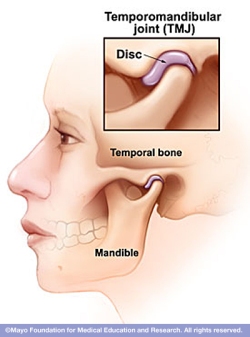Do you suffer from TMJ pain? If you experience pain while chewing, lock jaw, headaches, limited range of motion in the jaw, sore neck and shoulders, ringing in the ears and swallowing difficulties, you could be suffering from TMJ syndrome.
A common cause of TMJ include grinding of the teeth or clenching the jaw, usually at night while you sleep but can also happen during the day in response to stress. Another cause of TMJ is impact to the jaw, such as a fall or getting hit in the chin. In other instances it could be arthritis in the joint .
.
Some key symptoms of TMJ can be ear aches, pain in the face, headaches, or sinus pain. Oftentimes people do not link these issues together but they often go hand in hand. TMJ pain can be felt in the joint, behind the ear, around the sinuses, in the skull face, neck and shoulders. (Learn more about TMJ and Chiropractic)
Massage therapy can be a very effective tool in reducing the pain and irritation that comes along with TMJ syndrome. Your massage therapist will evaluate the muscles of the head, neck, shoulders, and jaw. The jaw is compromised of muscles around the cheek and jaw joint, as well as muscles on the inside of the mouth. The massage therapist will work on the affected muscles to relieve trigger points to help reduce pain and improve motion in the jaw
Make sure to let your massage therapist knows all of your symptoms in order for them to better treat the problem. By creating a detailed picture of your pain, the massage therapist can focus on the muscles that are causing the discomfort.
Massage therapy is a good resource for getting rid of TMJ pain. If you have questions about how massage can better your pain or about TMJ, let us know!

 A high level of pain will cause your body to go into protective mode. It can actually block any positive change that the massage would normally give you. You should never be in a high pain range to get the results you want.
A high level of pain will cause your body to go into protective mode. It can actually block any positive change that the massage would normally give you. You should never be in a high pain range to get the results you want.